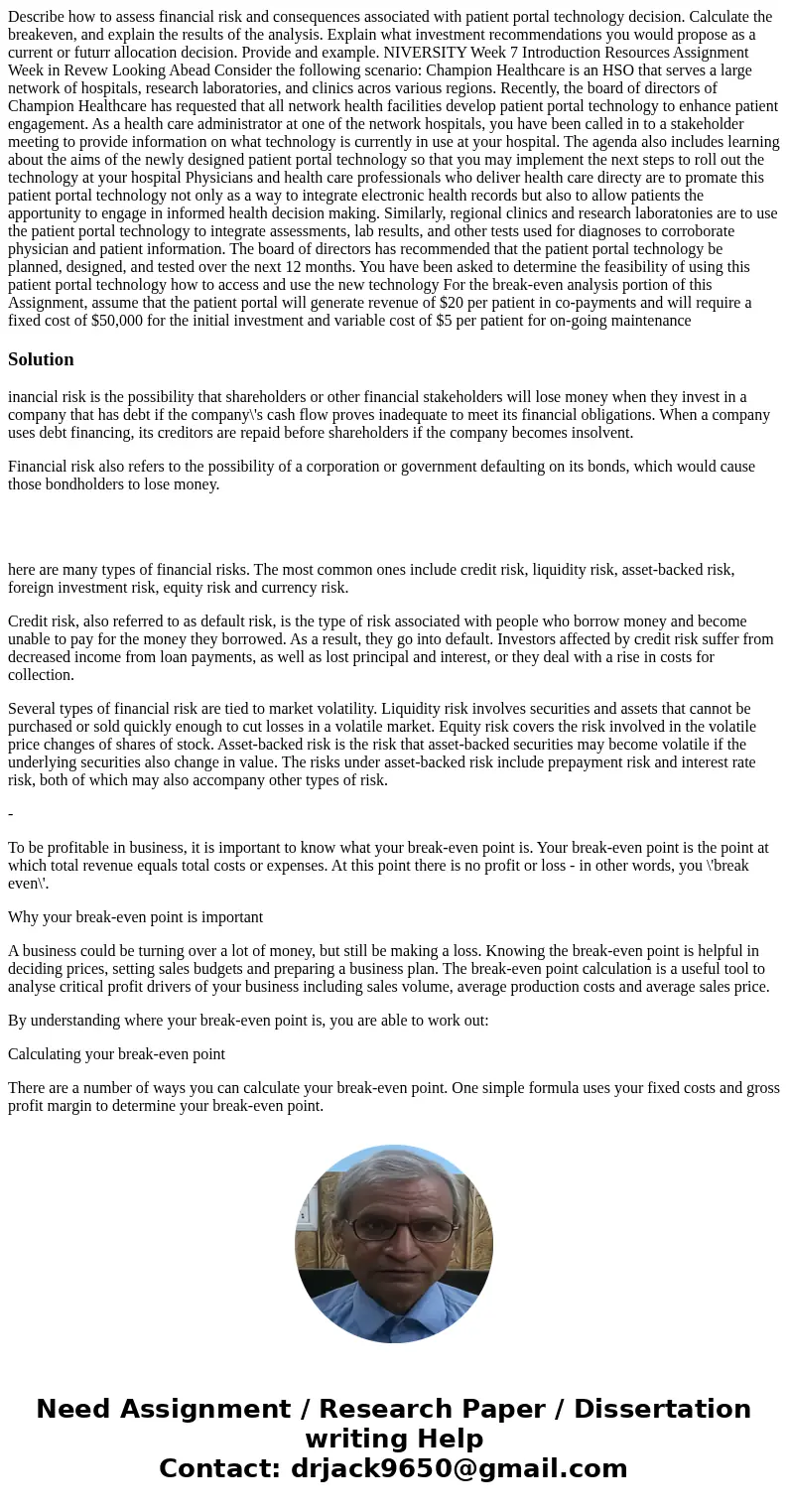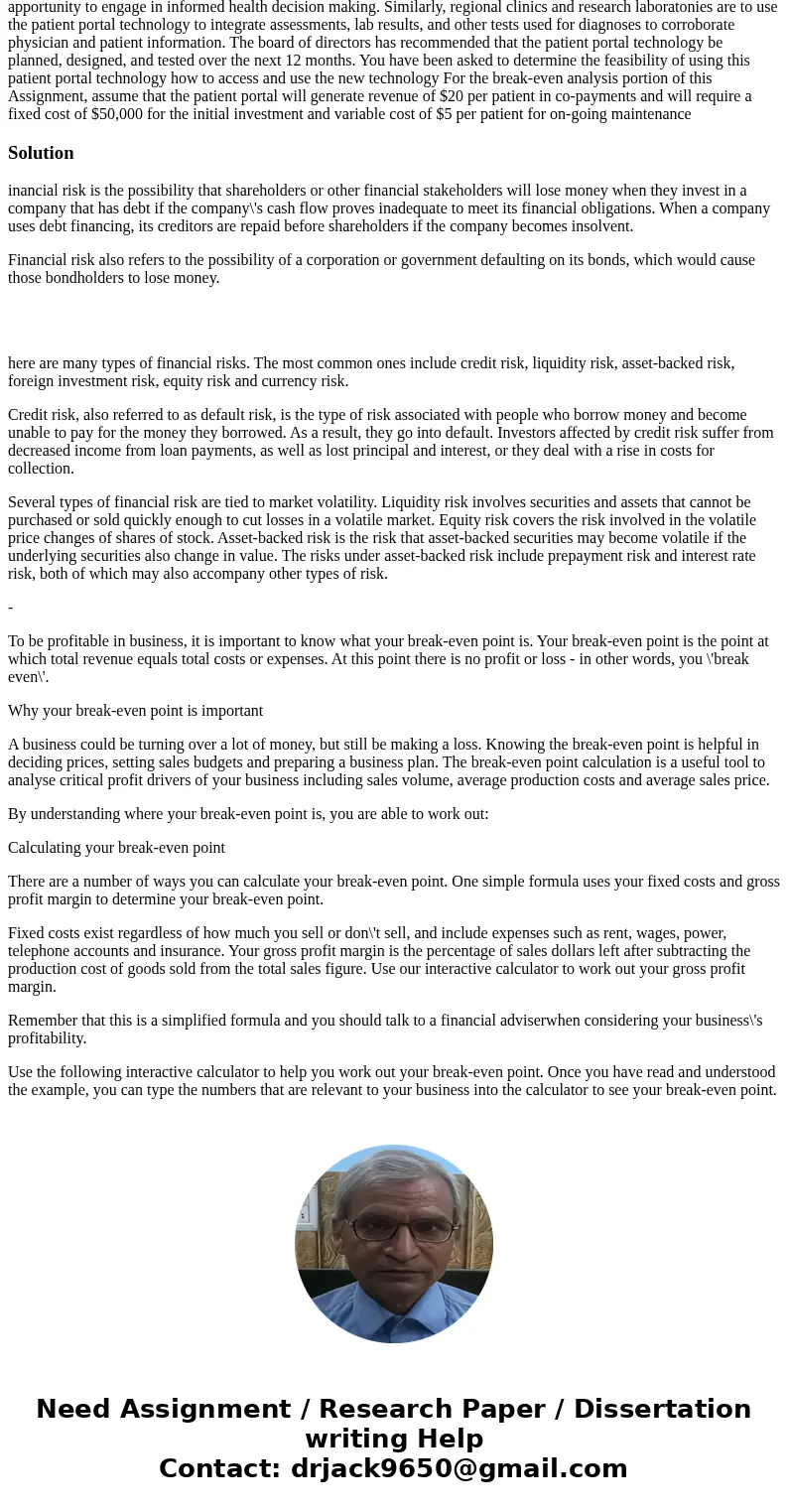Describe how to assess financial risk and consequences assoc
Solution
inancial risk is the possibility that shareholders or other financial stakeholders will lose money when they invest in a company that has debt if the company\'s cash flow proves inadequate to meet its financial obligations. When a company uses debt financing, its creditors are repaid before shareholders if the company becomes insolvent.
Financial risk also refers to the possibility of a corporation or government defaulting on its bonds, which would cause those bondholders to lose money.
here are many types of financial risks. The most common ones include credit risk, liquidity risk, asset-backed risk, foreign investment risk, equity risk and currency risk.
Credit risk, also referred to as default risk, is the type of risk associated with people who borrow money and become unable to pay for the money they borrowed. As a result, they go into default. Investors affected by credit risk suffer from decreased income from loan payments, as well as lost principal and interest, or they deal with a rise in costs for collection.
Several types of financial risk are tied to market volatility. Liquidity risk involves securities and assets that cannot be purchased or sold quickly enough to cut losses in a volatile market. Equity risk covers the risk involved in the volatile price changes of shares of stock. Asset-backed risk is the risk that asset-backed securities may become volatile if the underlying securities also change in value. The risks under asset-backed risk include prepayment risk and interest rate risk, both of which may also accompany other types of risk.
-
To be profitable in business, it is important to know what your break-even point is. Your break-even point is the point at which total revenue equals total costs or expenses. At this point there is no profit or loss - in other words, you \'break even\'.
Why your break-even point is important
A business could be turning over a lot of money, but still be making a loss. Knowing the break-even point is helpful in deciding prices, setting sales budgets and preparing a business plan. The break-even point calculation is a useful tool to analyse critical profit drivers of your business including sales volume, average production costs and average sales price.
By understanding where your break-even point is, you are able to work out:
Calculating your break-even point
There are a number of ways you can calculate your break-even point. One simple formula uses your fixed costs and gross profit margin to determine your break-even point.
Fixed costs exist regardless of how much you sell or don\'t sell, and include expenses such as rent, wages, power, telephone accounts and insurance. Your gross profit margin is the percentage of sales dollars left after subtracting the production cost of goods sold from the total sales figure. Use our interactive calculator to work out your gross profit margin.
Remember that this is a simplified formula and you should talk to a financial adviserwhen considering your business\'s profitability.
Use the following interactive calculator to help you work out your break-even point. Once you have read and understood the example, you can type the numbers that are relevant to your business into the calculator to see your break-even point.


 Homework Sourse
Homework Sourse